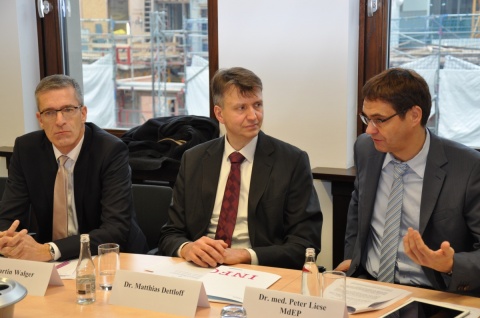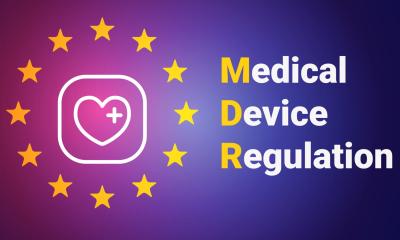Interview • EU regulation
Stopping unsafe medical device production
According to Dr Peter Liese (CDU), speaker for health issues for the European People’s Party (EPP Group), the largest parliamentary group, this is an important step for Europeans who have long awaited appropriate consequences to follow scandals such as poor quality breast implants, stents or unsafe HIV tests. Due to extremely complex issues, it took several years to reach an agreement, according to Liese, who suggested that certain ministers in some countries obviously did not consider this a top priority issue. EH asked the healthcare speaker to outline the draft regulation and expected effects
Interview: Walter Depner

The VDGH, the association representing the IvD industry in Germany, expects – or rather fears – that EU law will once again place a high financial and time burden on manufacturers, mainly due to the increased administrative requirements. Is this fear justified?
Peter Liese: ‘I do understand the concerns of VDGH. The Council’s position, as defined last year, indeed overshoots the mark. Pressured by the European Parliament, we revised the text. After long negotiations the Council finally agreed to reduce overly bureaucratic requirements in many areas. I’m confident, that we will have a good compromise.’
A core issue are the so-called notified bodies, the certifying institutions. In Germany, these bodies are fairly well defined with TÜV, DEKRA, etc. But what is the situation in other countries? Are there comparable institutions?
‘Yes, there are comparable institutions – notified bodies – in almost all Member States. However, the quality differs.’
How and by whom are these notified bodies controlled?
‘Following inter alia the scandal regarding non-authentic breast implants the notified bodies have been controlled more tightly over the past few years. However, this is a purely voluntary measure in the Member States. The new regulation aims to make stricter controls mandatory. Moreover, the notified bodies can control each other across borders, for example German and French notified bodies can check whether their counterparts in Eastern European countries work properly. And in the future, these institutions have to employ healthcare professionals.’
In the past we saw a number of – not necessarily ‘scandalous’ – cases where the quality of IVD products was questioned, for example, test kits. Due to the common market, these kits can obviously be sold all over the EU. Probably everyone remembers the case of breast implants made from cheap industrial silicone, clearly a scandal. There was also an HIV test that, as the Paul Ehrlich Institute discovered, produced a high number of false negative results.
The new regulation aims to make stricter controls mandatory.
Dr. Peter Liese
‘The new regulation will at least make fraudulent actions much more difficult. The notified bodies will be able to make unannounced visits to companies after a market launch of medical devices. ‘There also will be an additional procedure for high-risk devices such as implants, where not only the notified bodies but also an expert group will assess product conformity.’
Are there figures regarding how many medical devices and IVD launched each year will be affected by these changes?
‘There are somewhere between 3,000 and 5,000 IVD products and more than 100,000 medical devices.’
The so-called genetic technology products are also governed by this new regulation. What is the situation in the different EU Member States?
‘The European Parliament demands special rules for DNA tests. Obviously we do need strict rules for all diagnostic tests to guarantee the quality of the products as such. DNA tests are a special case as they deal with highly sensitive information. Therefore the European Parliament suggested that such tests only be performed after expert counselling and explicit consent of the patient. In some countries – but not all Member States – this is already standard operating procedure. Since, for IVD manufacturers many things will change, we agreed on a five-year transition period.’
Meaning a transition period to allow all stakeholders to understand and implement the new rules?
‘Exactly! There will be a transition period of five years for IVDs after the regulation’s entry comes into force.’
Thank you – hopefully the new regulation will increase patient safety with regard to medical devices and IVD for all of us, throughout the EU.
09.08.2016









